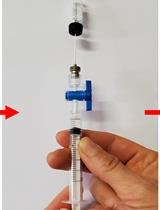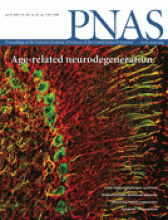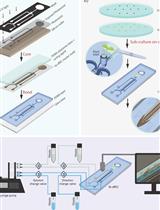- EN - English
- CN - 中文
Accelerated Snowmelt Protocol to Simulate Climate Change Induced Impacts on Snowpack Dependent Ecosystems
加速雪融诱发气候变化对依赖雪被斑块生态系统的影响
发布: 2020年03月20日第10卷第6期 DOI: 10.21769/BioProtoc.3557 浏览次数: 4242
评审: Marie MueheStefanie LutzAnonymous reviewer(s)

相关实验方案

使用气相色谱和火焰离子化检测技术对亚热带乔木作物荔枝(Litchi chinensis Sonn.)叶和芽组织中乙烯产量进行定量分析
Regina B. Cronje and Arnoldus J. Jonker
2023年03月20日 1427 阅读
Abstract
Field studies that simulate the effects of climate change are important for a predictive understanding of ecosystem responses to a changing environment. Among many concerns, regional warming can result in advanced timing of spring snowmelt in snowpack dependent ecosystems, which could lead to longer snow-free periods and drier summer soils. Past studies investigating these impacts of climate change have manipulated snowmelt with a variety of techniques that include manual snowpack alteration with a shovel, infrared radiation, black sand and fabric covers. Within these studies however, sufficient documentation of methods is limited, which can make experimental reproduction difficult. Here, we outline a detailed plot-scale protocol that utilizes a permeable black geotextile fabric deployed on top of an isothermal spring snowpack to induce advanced snowmelt. The method offers a reliable and cost-effective approach to induce snowmelt by passively increasing solar radiation absorption at the snow surface. In addition, control configurations with no snowpack manipulation are paired adjacent to the induced snowmelt plot for experimental comparison. Past and ongoing deployments in Colorado subalpine ecosystems indicate that this approach can accelerate snowmelt by 14-23 days, effectively mimicking snowmelt timing at lower elevations. This protocol can be applied to a variety of studies to understand the hydrological, ecological, and geochemical impacts of regional warming in snowpack dependent ecosystems.
Background
The intergovernmental panel on climate change reported in 2014 that over a period of 1976-2012 snow cover in the Northern Hemisphere has decreased by 11.7% per decade in the month of June (IPCC, 2014). Snowpack storage is crucial for headwater regions, and early water release could lead to water resource management and ecosystem function issues (Elias et al., 2015; Demaria et al., 2016). It has been predicted that snowmelt timing in the western U.S. could be enhanced by as much as two months by the end of this century (Rauscher et al., 2008), while a more recent study (Clow et al., 2016) reported advanced snowmelt offset by 1-2 weeks over the past two decades in Colorado, which is an essential headwater state. Shorter periods of snow cover and earlier water release have the potential to affect several aspects of ecosystem health in mountainous environments such as water availability and storage (Barnett et al., 2005), plant phenology and succession (Livensperger et al., 2016), and the soil microbial community structure (de Vries and Griffiths, 2018). With several aspects of the environment impacted by shifts in snowmelt timing, it is helpful to have a reliable and reproducible method that enables paired comparisons of enhanced and natural snowmelt across researchers and geographic regions.
A variety of methods have been used to manipulate snowmelt rates. Some have used a shovel to remove snow depth (Wipf et al., 2006), while others implemented more involved methods such as infrared heating sources (Harte et al., 1995; Bokhorst et al., 2008), or distributing black sand across the snow surface area (Steltzer et al., 2009; Blankinship et al., 2018). In contrast to these methods, the protocol described here is a noninvasive, low cost, and easily reproducible method that increases the absorption of solar radiation with a permeable black fabric deployed directly on the snow surface (Walsh et al., 2003; Steltzer et al., 2009). In addition, the method enables paired contrasts between accelerated and natural snowmelt processes in adjacent plots with conserved water equivalents. In contrast to black sand applications, the fabric is removed once the snow has fully melted and does not leave residual non-native material in associated soils. This refined protocol builds upon insights from past studies using permeable fabric covers (Steltzer et al., 2009) with a goal of increasing method utility, adoption and reproducibility. More recent efforts from 2017-2019 in Crested Butte, Colorado have documented snowmelt advancement of 14-23 days when contrasting manipulated and control plots at an elevation of 3,170 meters (Figure 1). The protocol and equipment explained below allows others to establish, deploy and monitor several aspects of the snowmelt process and can be adapted for a variety of environmental studies including but not limited to plant litter decay processes, geochemical shifts in the hydrosphere, and local plant phenology and growth.

Figure 1. Visual representation of tarp deployment and resulting accelerated snowmelt during spring 2019 manipulation. A. The geotextile fabric was deployed after an isothermal snowpack was established. B. Removal of the tarp reveals the clear influence of this protocol on enhanced melting in the target plot. C. Contrast of the accelerated snowmelt plot with the control snowmelt reveals localized, accelerated onset of plant growth in the manipulated plot. Note, white rings visible within the area of manipulation were used for a separate experiment and are not discussed in this protocol (B, C).
Materials and Reagents
- Snow cover and anchors
- Permeable black UV PE Knitted Shade Cloth 50%: 9.8 x 9.8 m with hemmed grommets spaced every 1.2 m (Agriculture Solutions, catalog number: KS50 )
- Type III 550 paracord 60 m spool (Paracord Planet)
- 12 Pack aluminum alloy locking Carabiners (Bondream)
- Four 1.1 cm x 15.2 cm wooden dowels (Hardware Store)
- Four 5 cm x 10 cm x 12 cm wood blocks (Hardware Store)
- Drill with a 6.35 mm bit (Hardware Store)
- Snow stakes and plot markers
- Four PVC pipes 2.5 cm x 3 m; Plain end PVC Schedule 40 Pressure Pipe (Hardware Store)
- Multi-Colored Duct Tape (Hardware Store)
- Four 1.3 cm x 1.2 m #4 Rebar (Hardware Store)
- Small sledge hammer (Hardware Store)
Equipment
- Deployment
- Post hole digger or metal shovel (Hardware Store)
- 35.5 cm Big Grip Garden Knife (Hardware Store)
- Data analysis
- Two Hobo H21 Data Loggers (Onset HOBO data logger, catalog number: H21-002 )
- Four Hobo moisture probes (Onset HOBO data logger, catalog number: S-SMD-M005 )
- Four Hobo temperature probes (Onset HOBO data logger, catalog number: S-TMB-M006 )
- Two Chemical resistant washdown enclosures 22.9 cm x 22.9 cm x 11.4 cm (McMaster-Carr, catalog number: 8261k27 )
- Ultra-abrasion resistant expandable sleeving stainless steel 1.3 cm ID, 3 m length (McMaster-Carr, catalog number: 1478T3 )
- 250 g Plumber’s putty (Hardware Store)
- TimelapseCam Pro camera (Wingscapes, catalog number: WCB-00121 )
- At least 6 Lysimeters (15.2 cm Soil Moisture lysimeters, catalog number: 1905L06 )
Procedure
文章信息
版权信息
© 2020 The Authors; exclusive licensee Bio-protocol LLC.
如何引用
Leonard, L. T., Wilmer, C., Steltzer, H., Williams, K. H. and Sharp, J. O. (2020). Accelerated Snowmelt Protocol to Simulate Climate Change Induced Impacts on Snowpack Dependent Ecosystems. Bio-protocol 10(6): e3557. DOI: 10.21769/BioProtoc.3557.
分类
环境生物学 > 生态系统 > 水文学
环境生物学 > 生态系统 > 植物生长
植物科学 > 植物生理学 > 植物生长
您对这篇实验方法有问题吗?
在此处发布您的问题,我们将邀请本文作者来回答。同时,我们会将您的问题发布到Bio-protocol Exchange,以便寻求社区成员的帮助。
提问指南
+ 问题描述
写下详细的问题描述,包括所有有助于他人回答您问题的信息(例如实验过程、条件和相关图像等)。
Share
Bluesky
X
Copy link












